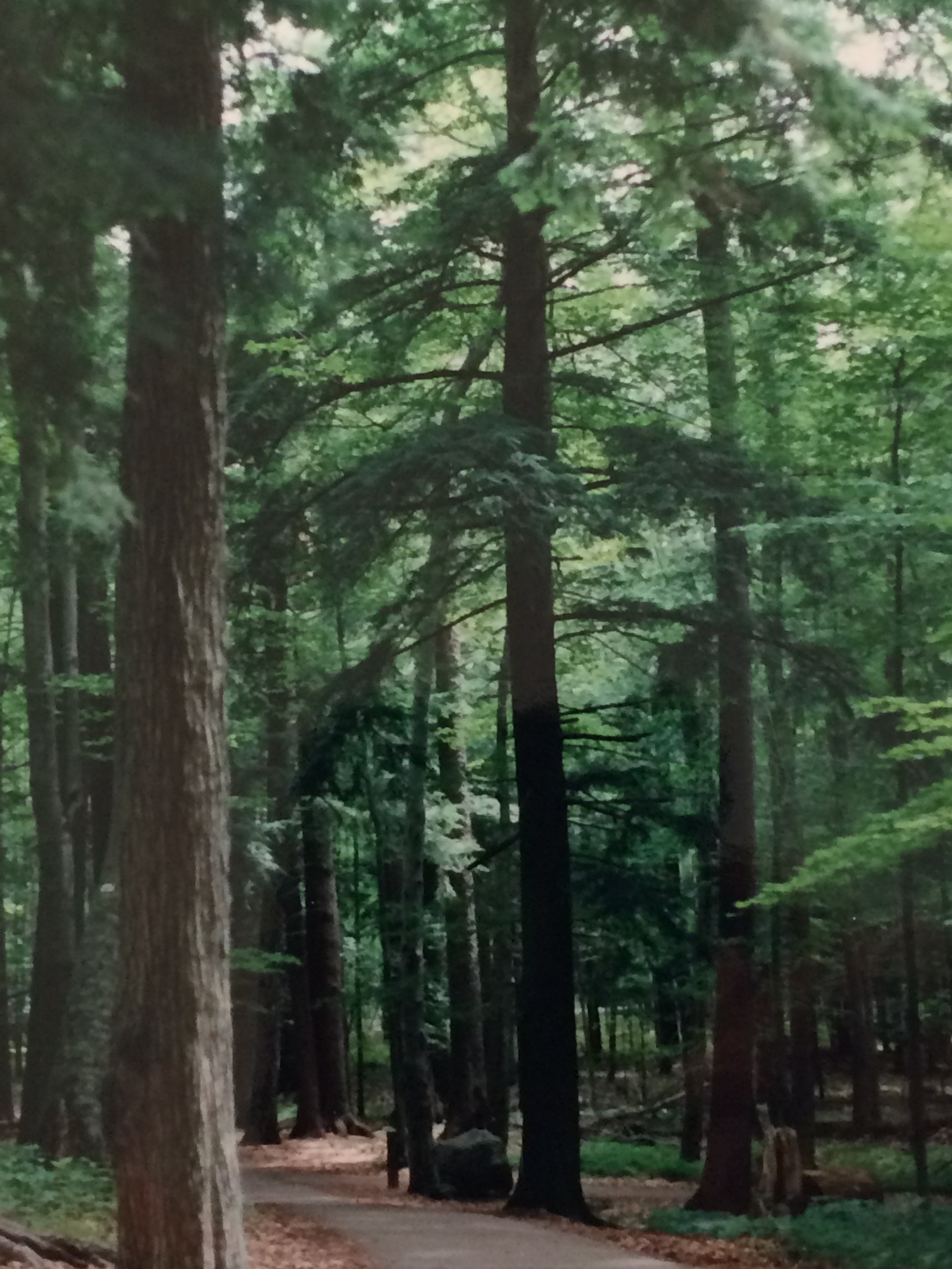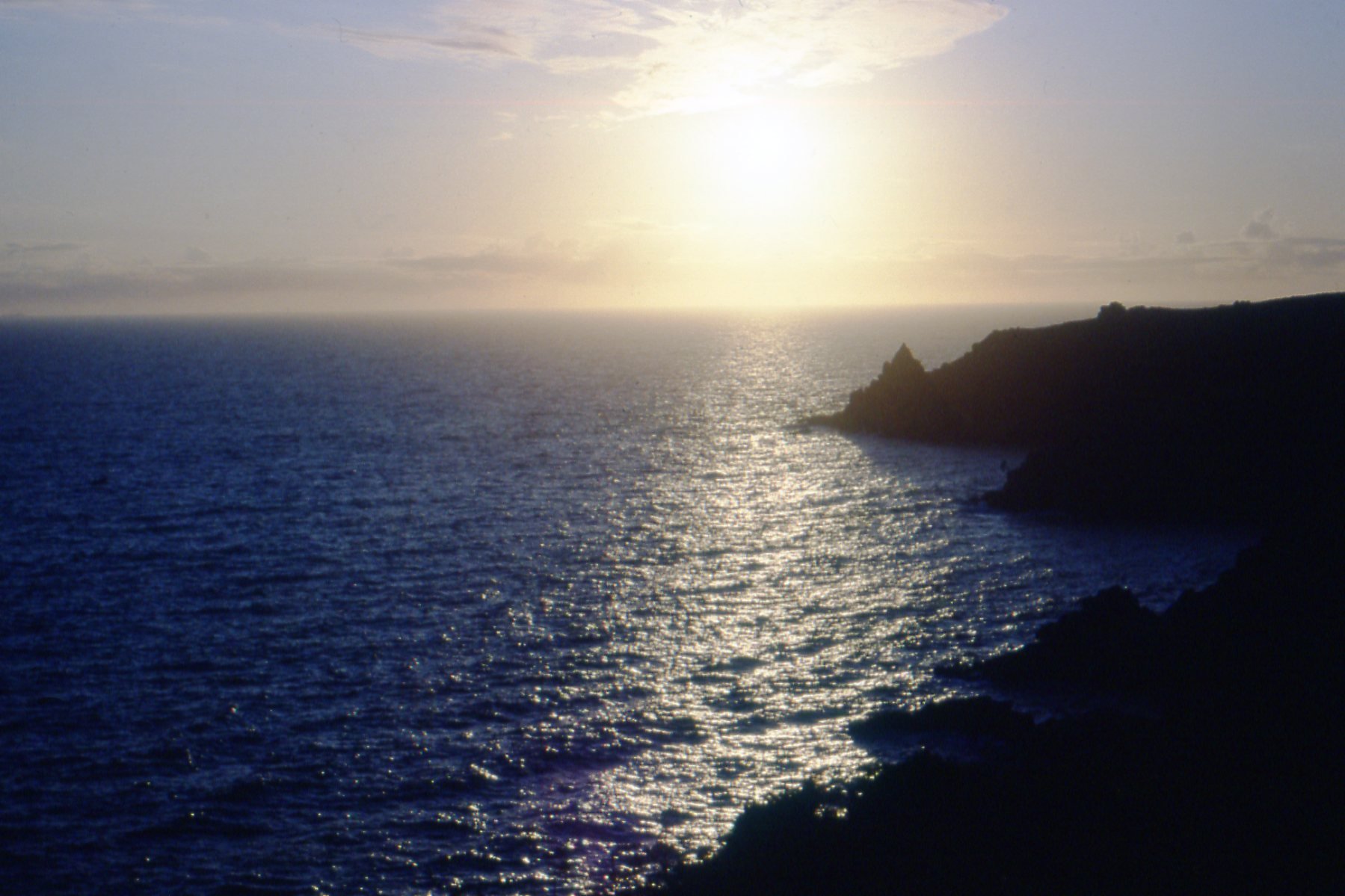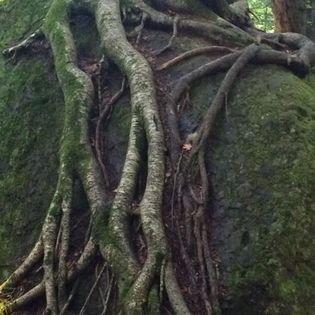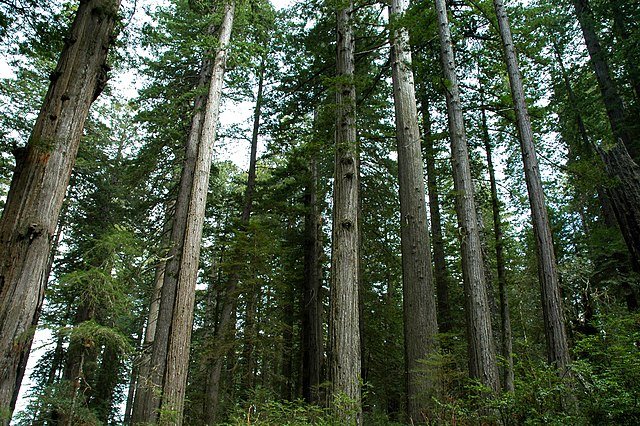- from the Latin “vastus” –the quality of being immense
In the past several days, people have thronged to the St. Louis River, Gooseberry Falls, the Temperance, the Cascade, the Lester to experience the immensity of rushing waters, waterfalls, and expanding floodplains. They are all in search of awe.
“What is an experience of awe that you have had, when you encountered a vast mystery that transcends your understanding of the world?” (xix). Psychologist Dacher Keltner and his collaborator, Yang Bai, asked this question of 2600 people in 26 countries around the world. They were seeking an answer to the questions 1) what is awe, and 2) what leads people to feel awe.
They discovered that universally “eight wonders of life” consistently evoke the experience of awe. First and foremost is what they termed “moral beauty” -- “other people’s courage, kindness, strength, or overcoming” (11). Second is “collective effervescence” – a sense of “we” experienced at weddings, graduations, sporting events, political rallies. Third is nature; fourth – music; fifth – visual design; sixth – spiritual and religious awe; seventh – birth and death; and finally – epiphanies – “when we suddenly understand essential truths about life” (17).
They also asked the “so what?” question, that my philosophy professors required be addressed in every paper we wrote, and found that awe makes us better. People who experience awe are more open to new ideas, curious, thoughtful, generous, kind, willing to put aside self-interest in favor of others, less prone to political polarization, less likely to experience anxiety and depression, and more likely to experience joy.
They found that regardless of the source, the experience of awe followed a distinct pattern -- “vastness, mystery, and the dissolving of boundaries between the self and other sentient beings” (124-125). What strikes me most in this is the notion of “vastness.” Vastness, Keltner writes, can be physical – whether standing next to towering trees, looking out over the vast expanse of the ocean, or witnessing the power of roots to grow on rock, or hearing a singer’s voice, or feeling the exquisite softness of a newborn babe’s skin; or temporal – such as a scent or a piece of music that transports you back in time; or about ideas – such as an epiphany that helps you make sense of the world.
“The content of what is vast varies dramatically across cultures and the contexts of our lives,” writes Keltner. “In some places it is high-altitude mountains, and in others flat never-ending plains with storms approaching. For infants it is the immense warmth provided by parents, and when we die, the enormous expanse of our lives. . . . The varieties of vastness are myriad, giving rise to shifts in the meaning of awe” (8).
But vastness is not just about immensity of things and experiences, but also the way vastness serves to dissolve boundaries, thus connecting us with something greater than ourselves, and uniting us into community. Yet, the past several hundred years of Western culture have been devoted to the erection of boundaries – personal, political, religious, racial, ideological, and physical.
In his study of land, British-American journalist Simon Winchester found that to inquire into the fate of land around the world was necessarily to study the creation of boundaries. Whether by hedgerows, fences, walls, barbed wire, and no trespassing signs surrounding “private” property, or the political boundaries drawn between counties and states and nation-states – by the creation of boundaries, every square inch of land (and most bodies of water) on this earth can be designated as “owned” by some person(s), group, corporation, or political entity.
This was not always the case. In the time before boundaries, the world was vast. Or as English philosopher John Locke wrote in 1690, “in the beginning, all the world was America,” when America was still a land without fences, walls, and nation-state borders, but rather a land of vast forests, plains, mountains, fish, fowl, and four-footed. So different was this from life in England, where as early as 1086, the entirety of England had been surveyed and recorded in the Domesday Book at the behest of William the Conqueror – who became King William I – so that he could have a record of his holdings and how much was due him in taxes. In 1773 the Parliamentary “Act of Inclosure” codified the enclosure of the “commons” – the land common to all, available for the growing of crops and the grazing of cattle -- by the feudal lords. Each enclosure required the approval of Parliament, which it gave 5000 times through the 18th and 19th centuries.[i] According to the Act, the enclosures were designed “for the better Cultivation, Improvement, and Regulation of the common Arable Fields, Waste, and Commons of Pasture in this Kingdom” (quoted in Winchester, 177). The Crown of England declared the commons “wastelands.”
Wasteland. Wasted land. “Land that is left wholly to nature,” wrote Locke, “that hath no improvement of pasturage, tillage, or planting, is called, as indeed it is, waste; . . . “ (26). Waste – from the Latin vastus – meaning “empty, desolate”; “immense, extensive, huge.” Or according to the Oxford English Dictionary: 1.“uninhabited or uncultivated country; a wild and desolate region, a desert, a wilderness; 2. “a piece of land not cultivated or used for any purpose, producing little . . . “; 4. “of speech, thought, or action: profitless . . . “ Vast – also from the Latin vastus – meaning “empty, desolate” or” immense, extensive, huge.” Or according to the OED: 1. “a vast or immense space.”
When did “vast” become “waste”? When did the experience of vastness signify a wasteland? I first encountered this use of “waste” in Locke’s defining view on “property,” in which he makes the case for the legitimacy of ownership of private property and the unequal distribution of wealth. “As much land that a man tills, plants, improves, cultivates, and can use the product of, so much is his property. He by his labour does, as it were, enclose it from the common” (20). In doing so, not only does “a man” come to own property, he fulfills God’s commandment. “God, and his reason,” Locke continued, “commanded him to subdue the earth – i.e., improve it for the benefit of life . . .” (20).
Locke was not the first or only to make this argument. The Dutch jurist Hugo Grotius claimed the same in nearly the same language several decades previously, “’land which lies common, and hath never beene replenished or subdued, is free to any that possesse and improve it’” (Grotius quoted in Winchester, 129). A few years later, John Winthrop, the governor of Massachusetts Bay Colony, would argue, based on God’s command in Genesis I:28 for man to subdue the earth, that it was man’s “Christian duty” to “improve” the land – meaning to fence it in, cultivate it, and produce profit from it.
So when Europeans became aware of the vastness that was pre-contact America, they came in droves to enclose and “improve” the land. In this they were spurred on by the Papal Doctrine of Discovery granting them full religious authority to appropriate and claim title to the land,[ii] ignoring the fact that vast numbers of people already lived here. And so, as Winchester writes, “the rush to gather up the spoils -- the land and its landscapes, soon to be deconsecrated and commodified – got ponderously under way” (132). “Every effort had the same theme,” writes ecofeminist Susan Griffin, “those whose lands were taken were being improved” (100). As she so eloquently states, “In the Western habit of mind, the earth is no longer enchanted with its own significance. A forest exists for lumber. Trees for oxygen. A field for grazing. Rocks for minerals. Water for irrigation” (56).
This ideology that land that is not being cultivated, mined, lumbered, or otherwise used to create goods and capital is ‘waste” continues its devastating effects to this day in mountaintop removal, destruction of old growth forests, fracking and drilling and mining of once pristine lands, plowing the plains into dust and spreading herbicides and pesticides over the land. Devastate - from the Latin devastare, meaning to “lay waste, ravage, make desolate.” Devastate – to de-vast — i.e., to destroy the vastness. And so has the vastness that was the lands of the Americas —as well as other continents — been plundered, laid waste, so as not to “waste” it.
“Our default minds, so focused on independence and competitive advantage, are not well-suited to making sense of the vast,” explains Keltner. “So guided are we by prior knowledge and our need for certainty that we avoid or explain away the mysteries of life” (178). Perhaps not knowing how to make sense of such vastness, the settler colonialists instead saw only ways to declare their independence from feudal lords, from one another, and the earth; to regard each other as competitors rather than community; and enclose all that was vast and render it small, manageable. In doing so, they wasted a far more valuable opportunity – to experience, appreciate, and learn from the awe vastness inspires. How different a country, a people, a land might we be if we had merely been awestruck – and thereby become curious, more open to learning, better able to welcome difference, more willing to make sacrifices for others, more united in community with every and all sentient beings. How different if we had listened and learned from those inhabitants of this land who already knew how to live in intimate relationship with the land in ways that preserved and respected its vastness.
In the 1990s, biologist Janine Benyus coined the term “biomimicry,” a different, though ancient, approach to the natural world. In Krista Tippett’s words, biomimicry is “a design discipline that takes the natural world as mentor and teacher” to solve complex human problems. “In a society accustomed to dominating or ‘improving’ nature, this respectful imitation is a radically new approach, a revolution really,” writes Benyus. “The Biomimicry Revolution introduces an era based not on what we can extract from nature, but on what we can learn from her” (2). She continues, “We can decide as a culture to listen to life, echo what we hear, to not be a cancer. . . . we can make the conscious choice to follow nature’s lead in living our lives” (297). I find hope in the ways that principles of biomimicry are beginning to be used by engineers, architects, builders, farmers, to find better, more sustainable ways to create the products we use in our everyday lives – from the food we eat, to the ways we heal, to “gathering energy like a leaf,” “weaving fibers like a spider,” and “conducting business like a redwood forest” (i).
“For too long,” Benyus writes, “we have judged our innovations by whether they are good for us, which has increasingly come to mean whether they are profitable. Now we have to put what is good for life first” (291).
But what’s more, Benyus continues, “ . . . biomimics develop a high degree of awe, bordering on reverence” (7). In a recent interview with Tippett, Benyus told the story of a desalination engineer who was in tears with an epiphany he had in a mangrove swamp. “He said, ‘How is it that in my education . . . ? I’ve been doing this work for 30 years, 40 years. I’m a desalination expert. I filter salt from water. And this plant has its roots in saltwater, and it’s solar powered, and it’s desalinating.’ He said, ‘I’m crying because it’s beautiful and because no one ever told me.’” Tears, along with chills, and “Whoas” are the universal responses to awe – here the awe of epiphanies, the awe of nature.
Keltner suggests we regularly take time for awe. I’m fortunate to live in a place where I can daily witness the vast expanse of Lake Superior, but awe is accessible to us all. Get outside, Keltner encourages. Getting outdoors – whether to experience the wild rivers and waterfalls or to appreciate the wonder of a warbler’s song or the crystalline pattern of a snowflake creates in us an experience of wild awe wherein we come to revere the natural world. We need merely to appreciate the vastness, let our boundaries dissolve, and connect to the earth, each other, and the universe in awe.
Sources
Benyus, Janine M. 1997. Biomimicry: Innovation Inspired by Nature. New York: HarperCollins.
Chollet, Mona. 2022. In Defense of Witches: The Legacy of the Witch Hunts and Why Women Are Still on Trial. Trans. Sophie R. Lewis. New York: St. Martin’s Press.
Griffin, Susan. 1995. The Eros of Everyday Life: Essays on Ecology, Gender and Society. New York: Anchor Books.
Keltner, Dacher. 2023. Awe: The New Science of Everyday Wonder and How It Can Transform Your Life.” New York: Penguin.
Locke, John. 1690/ 1960. Second Treatise on Civil Government: An Essay Concerning the True Original, Extent and End of Civil Government. In Social Contract: Essays by Locke, Hume, and Rousseau. With an Introduction by Sir Ernest Barker. London: Oxford U. Press. 1-143.
Shiva, Vandana. 2005. Earth Democracy: Justice, Sustainability, and Peace. Cambridge, Mass.: South End Press.
Tippett, Krista. (host). (2023, March 23). Janine M. Benyus: Biomimicry: An Operating Manual for Earthlings. [audio podcast]. Retrieved from Janine Benyus — Biomimicry, an Operating Manual for Earthlings | The On Being Project.
Winchester, Simon. 2021. Land: How the Hunger for Ownership Shaped the Modern World. New York: HarperCollins.
[i] The enclosure of the commons was particularly hard on women, who depended disproportionately on the commons to graze cows and gather herbs. For many, it ended their independence, with the oldest often reduced to begging. (See Mona Chollet’s In Defense of Witches.) Ecofeminist Vandana Shiva has commented extensively on the effects of the British enclosure of the commons in India following conquest, holding it responsible for the impoverishment of the Indian people. She extends this to contemporary forms of enclosure of globalization and free trade: “Globalization and free trade decimate the conditions for productive, creative employment by enclosing the commons, which are necessary for the sustenance of life” (14).
[ii] The Doctrine of Discovery, which gave official Church sanction to conquest of lands and peoples, was granted by Pope Nicholas V in his 1454 papal bull giving dispensation to the Portuguese to seize any land and peoples in Africa south of Cape Bojador. Other European countries adopted their own versions of it so that by merely planting a flag they would declare land theirs.







